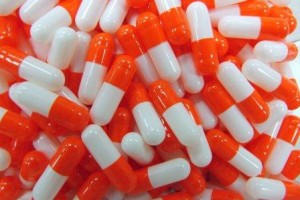Anemia
Anemia is present in adults if hematocrit is less than 41%, (which translates to a haemoglobin of <13.5 g/dl) in males and less than 37%, (which translates to a haemoglobin of <12 g/dl) in females.
Classification of Anemia by pathophysiology
Anemias are classified under two heads
- Decreased Production
- Increased Destruction
We will further explain it through this table.
| Decreased Production | |
| Haemoglobin synthesis | Iron Deficiency |
| Thalassemia | |
| Anemia of Chronic Disease | |
| DNA Synthesis | |
| Megaloblastic Anemia (Very large RBC’s) | |
| Stem Cell | |
| Aplastic Anemia (bone marrow, and the blood stem cells that reside there, are damaged) | |
| Myeloproliferative leukemia | |
| Bone marrow infilteration | |
| Carcinoma | |
| Lymphoma | |
| Pure red cell aplasia | |
| Increased Destruction | |
| Blood Loss | |
| Hemolysis (Intrinsic) | |
| Membrane | |
| Hemoglobin | |
| Glycolysis | |
| Oxidation | |
| Hemolysis (Extrinsic) | |
| Immune (warm antibody, cold antibody) | |
| Microangiopathic (thrombotic thombocytopenic purpira, hemolytic- uremic syndrome, mechanical cardiac valve, paravalvular leak) | |
| Infection | |
| Hypersplenism |
Causes of Anemia:
Iron deficiency is the most common cause of Anemia worldwide. This iron deficiency can be caused by a lot of factors namely
- Deficient diet
- Decreased absorption
- Increased requirements,
- Pregnancy
- Lactation
- Blood loss
- Gastrointestinal
- Menstrual
- Blood donation
- Hemoglobinuria (free haemoglobin in urine)
- Iron Sequestration
- Pulmonary Hemosiderosis
Symptoms and signs
The following are the common symptoms of anemia
- Easy fatigability
- Tachycardia (faster heartbeat)
- Palpitations
- Tachypnea (rapid breathing) on exertion
In severe deficiency cases skin and mucosal changes, including a smooth tongue, brittle nails and chielosis. Dysphagia(difficulty in swallowing) because of the formation of esophageal webs.
Laboratory findings
Iron deficiency occurs in stages. The first is depletion of iron stores. At this point there is Anemia and no change in red blood cells size. The serum ferritin will become abnormally low. A ferritin value less than 30mcg/L is a highly reliable indicator of iron deficiency.
Severe iron deficiency will produce a bizarre peripheral blood smear, with severely hypochromic cells, target cells, hypochromic pencil-shaped cells, and occasionally small numbers of nucleated red blood cells. The platelet count is commonly increased.
Other causes of microcytic anemia include anemia of chronic diseases, thalassemia, and sideroblastic anemia. Anemia chronic disease is characterised by normal or increased iron stores in the bone marrow and a normal or elevated ferritin level; the serum iron is low, often drastically so, and the TIBC is either normal or low. Thalassemia produces a greater degree of microcytosis for any given level of anemia than does iron deficiency. Red blood cell morphology on the peripheral smear is abnormal earlier in the course of thalessemia.
Treatment
The diagnosis of iron deficiency Anemia can be made either by demonstrating an iron deficient state or by evaluating the response to a therapeutic trial of iron replacement. Since Anemia itself is rarely life threatening, the most important part of treatment is identification of the cause – especially a source of occult blood loss.
- Oral Iron: Ferrus Sulphate, 325 mg three times daily, which provides 180mg of iron daily of which upto to 10 mg is absorbed (though absorption may exceed this amount in cases of severe deficiency), is the preferred therapy.
An appropriate response is a return of the hematocrit level halfway toward normal within 3 weeks with full return to baseline after 2 months.Iron therapy is recommended to be continued for 3-6 months after restoration of normal hematologic values to replenish iron stores.
- Parenteral Iron: The indications are intolerance to oral iron, refractoriness to oral iron, gastrointestinal disease precluding the use of oral iron, and continued blood loss that cannot be corrected. This therapy should be used only if the oral therapy has been tried and results have not been satisfactory.


